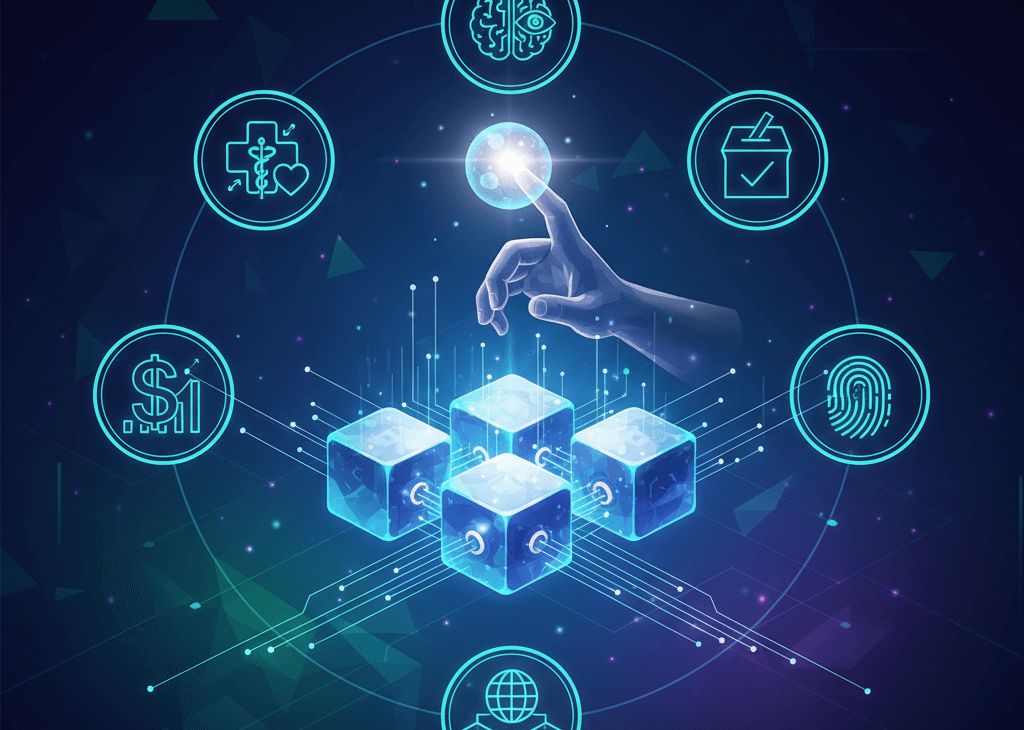When you hear the word blockchain, chances are Bitcoin or Ethereum immediately comes to mind. But in 2025, blockchain has grown far beyond powering cryptocurrencies. It’s now the backbone of finance, supply chains, healthcare, and even governments, and it’s reshaping how we think about trust, transparency, and ownership in the digital age.
If AI is the brain of tomorrow’s internet, blockchain in 2025 has become its memory — permanent, verifiable, and tamper-proof.
From Buzzword to Backbone: The Journey of Blockchain in 2025
Back in 2017–2021, blockchain was more hype than reality. Startups boasted of revolutionizing industries overnight, but most collapsed during the first wave of experimentation.
Fast forward to 2025, blockchain looks entirely different. The hype cycle is over — it has matured into real-world infrastructure.
- Decentralized Finance (DeFi): Still thriving, with global assets locked surpassing $150 billion.
- Central Bank Digital Currencies (CBDCs): More than 130 countries now pilot or launch digital currencies, including India’s Digital Rupee and the EU’s Digital Euro.
- Enterprise Blockchain: Fortune 500 companies now routinely use blockchain for supply chain tracking, smart contracts, and identity management.
Blockchain in 2025 and Finance: More Than Crypto
Bitcoin may be the most recognized use case, and Ethereum continues to power countless applications. But blockchain in 2025 fuels finance in much more impactful ways:
- Cross-border payments: Banks now move money instantly instead of waiting days for settlement.
- Asset tokenization: From real estate to digital art, trillions of dollars of value are tokenized, bringing accessibility to investors worldwide.
- Regulated DeFi: Compliance frameworks bridge traditional finance (TradFi) and decentralized finance (DeFi), creating a safer, more inclusive global financial ecosystem.
Real-World Blockchain Applications in 2025
Blockchain’s reach in 2025 doesn’t stop at banking. It’s becoming everyday infrastructure for industries we all interact with.
- Supply Chains: Companies like IBM and Walmart track goods from origin to consumer, drastically reducing fraud.
- Healthcare: Everyday citizens own their medical records on-chain, choosing exactly which doctors or providers can access them.
- Voting Systems: Estonia and South Korea are piloting blockchain-enabled elections that are both transparent and tamper-proof.
- NFTs 2.0: Beyond the hype of digital art, today’s NFTs unlock memberships, event tickets, and even employment credentials.
Blockchain in 2025 Meets AI
One of the biggest technology shifts this year is the merging of blockchain and artificial intelligence. With AI creating staggering amounts of content and data, blockchain provides authenticity and trust.
- Verification of content: Immutable proof of what’s real versus AI-generated fakes.
- Data marketplaces: Individuals sell personal data securely instead of tech giants monopolizing it.
- Decentralized AI models: AI networks stored on blockchain reduce dependence on big cloud monopolies.
Security Challenges for Blockchain in 2025
For all its progress, blockchain hasn’t completely escaped cybercrime. DeFi alone saw billions lost to hacks in 2023–2024 due to exploitable smart contracts. But solutions are emerging:
- AI-driven anomaly detection: Security algorithms identify vulnerabilities before attacks happen.
- Zero-Knowledge Proofs (ZKPs): Verifying data without compromising privacy.
- Standardization: Governments and Web3 firms now collaborate on global rules for safer blockchain adoption.
Blockchain in 2025 reminds us that “trustless” tech still depends on building user trust through accountability.
Challenges Ahead for Blockchain in 2025
Even as adoption grows, hurdles remain:
- Energy impact: Proof of Stake has reduced emissions for most chains, but Bitcoin mining’s footprint still stirs debate.
- Scalability: Ethereum continues to evolve but struggles to meet massive global demand.
- Regulation gaps: Countries remain divided; some embrace blockchain, others restrict it.
History shows technologies like the internet faced similar challenges before reaching mainstream adoption — blockchain in 2025 is no exception.
Glimpsing the Future of Blockchain in 2030
So where is this all heading? By the end of this decade:
- Tokenization of assets will dominate markets worldwide.
- Decentralized identities will replace outdated passwords.
- Blockchain-led governance may reshape how we vote and make collective decisions.
At its core, blockchain in 2025 is more than a financial tool. It is a trust engine — anchoring how our digital world stores, verifies, and safeguards value.
Key Takeaways
- Blockchain in 2025 has moved beyond hype and is now critical infrastructure.
- From finance to healthcare and governance, adoption is global and growing.
- AI and blockchain together solve authenticity and data ownership challenges.
- Security vulnerabilities and regulations remain pivotal hurdles.
- By 2030, expect tokenized assets, decentralized identity, and blockchain-driven governance.
Final Thought
In 2025, blockchain isn’t just about crypto anymore. It’s about trust, transparency, and control in the digital world. Those who adapt early won’t just be part of blockchain — they’ll be helping to define the next internet itself.
CBDC DeFi NFT 2.0 Tokenization
Last modified: September 24, 2025





